Residential Efficiency Measures
Whether you own or rent, it's important to understand your home’s energy consumption patterns. The home energy assessment will identify ways to save energy and money while making your home more comfortable during the winter and summer months.
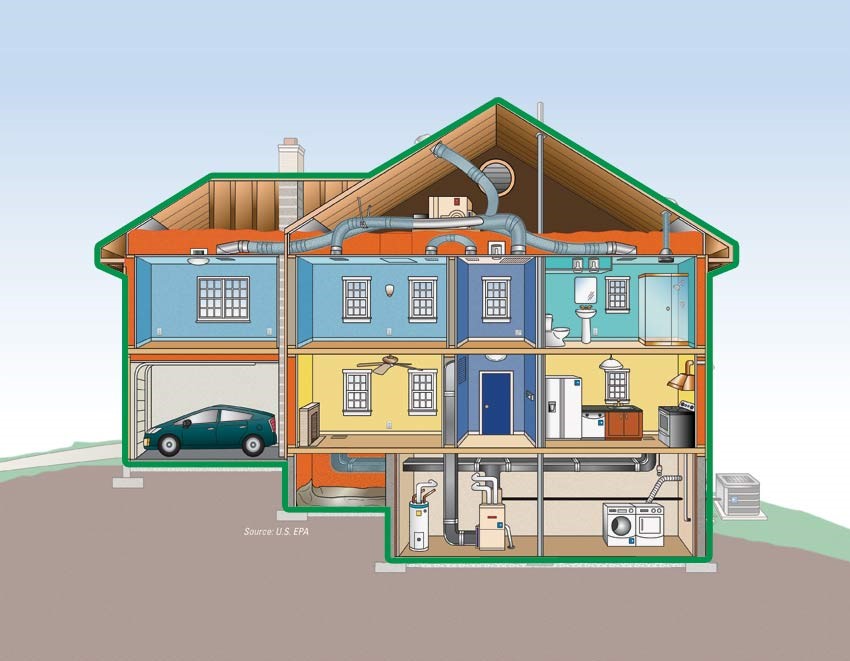
-
x
Attics
Attic floors in New England should have an insulation value of R-49 which averages to 14-16” of cellulose or fiberglass insulation. To retrofit existing homes, add more insulation by blowing in cellulose insulation to fill the gaps and cavities between any existing older insulation and your home’s framing.
-
x
Ducts in the attic
Air conditioning and ducted heating systems use more energy when they are installed in an attic. Ducts and air handlers can be improved with proper air sealing measures, but the best location for these mechanical systems are in a basement or conditioned space. Or consider moving your attic insulation up to the roof.
-
x
Outside of Your Home
Exterior walls which are either uninsulated or have less than an inch of existing insulation inside should have insulation blown into the wall cavity. Most types of siding have the ability to be temporarily removed to blow-in insulation.
-
x
Garage Ceiling
When a garage is attached next to or under a heated room, actions need to be taken to keep the dangerous fumes emitted from a vehicle’s exhaust from getting into a home. Insulation should be blown into the garage ceiling from below by drilling holes between the joists.
-
x
Crawl Space
Your basement and/or crawl space is the lowest space in your house. An uninsulated basement can lead to cold floors and an increased draftiness of your home.
-
x
Water Heater
When selecting a new water heater for a home, choose a water heating system that will not only provide enough hot water but also that will do so energy efficiently, saving money. This includes considering the different types of water heaters available.
-
x
Heating System
No matter what kind of heating system in a house, save money and increase comfort by properly maintaining and upgrading the equipment. An energy-efficient furnace alone will not have as great an impact on energy bills as using a whole-house approach. By combining proper equipment maintenance and upgrades with recommended insulation, air sealing, and thermostat settings, a home can save about 30% on the energy bill while reducing environmental emissions.
-
x
Laundry Appliances
EnergyStar washing machines remove more moisture before transferring the clothes into the dryer, reducing both the drying time and the wear on clothes from the high heat of the dryer.
-
x
Major Appliances
When shopping for appliances, they have two price tags. The first one covers the purchase price – that’s the down payment. The second price tag is the cost of operating the appliance during its lifetime. That second price tag will occur every month on the energy use bill for the next 10 to 20 years, depending on the appliance. Choose wisely, choose an EnergyStar appliance.
-
x
Thermostats
Save as much as 10% a year on heating and cooling by simply turning the thermostat back 7°-10°F for 8 hours a day from its normal setting. The lower the interior temperature, the slower the heat loss. So the longer a house remains at the lower temperature, the more energy is saved because the house has lost less energy than it would have lost at the higher temperature.
Examples of Common Weatherization Measures
Many homes in New England are either un-insulated or under-insulated. A properly insulated home reduces energy usage and utility costs while increasing overall comfort.
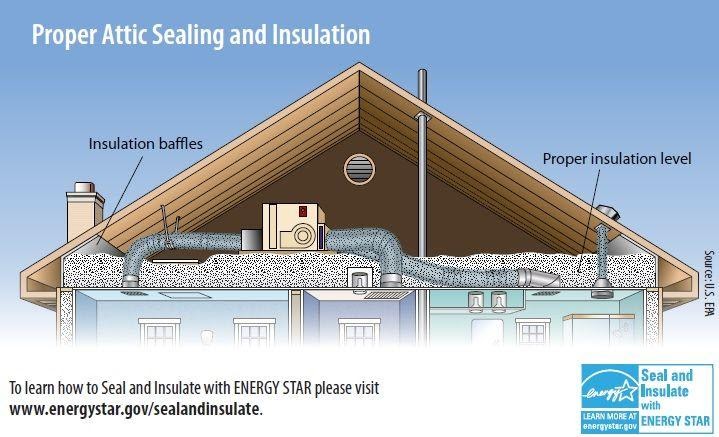
Attic Floors
Attic floors in New England should have an insulation value of R-49
which averages to 14-16” of cellulose of fiberglass insulation. To retrofit existing homes, add more insulation by blowing in cellulose insulation to fill the gaps and cavities between any existing older insulation and your home’s framing.
Knee Walls
Knee walls are small, triangular unfinished spaces, typically found on the second floor in Cape-style homes. Insulation needs to installed against the short knee walls and the floor filled with 14-16” of insulation to an insulating value of R-49. When the knee wall region is used for storage, or there are pipes and ducts to protect, the insulation should be installed in the rafters.
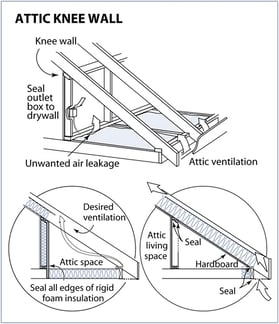
Exterior Walls
Exterior walls which are either uninsulated or have less than an inch of existing insulation inside should have insulation blown into the wall cavity. Most types of siding have the ability to be temporarily removed to blow-in insulation.
Garages
When a garage is attached next to or under a heated room, actions need to be taken to keep the dangerous fumes emitted from a vehicle’s exhaust from getting into a home. Insulation should be blown into the garage ceiling from below by drilling holes between the joists.
Basements
In unheated basements and where there is minimal ambient heat loss from newer heating equipment, the basement ceiling should be insulated.
In semi-conditioned basements, where there is residual heat from an older heating system, insulate the sill plate area above the top of the foundation with fiberglass or rigid foam board. This area is exposed to the outside and will have a big impact on improving a home’s energy efficiency.
Throughout a home there are small, unintentional construction gaps that allow substantial air leakage tHAT waste a home’s energy all year long. Air sealing these gaps with caulking and expanding foam will reduce the wasteful air leakage and help to keep a home comfortable year-round.
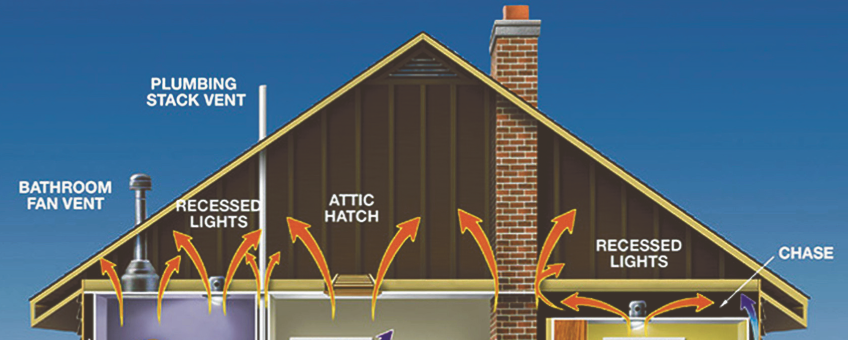
Diagnostic Testing
A blower door test is used to measure the total air-leakage, and to pinpoint specific leakage areas. The blower door results are compared to national ventilation standards to ensure an optimal air flow rate remains in the home after air sealing work is completed.
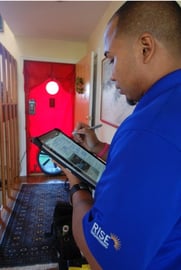
Improvements to the heating and cooling systems in a home are at the source of fundamental energy savings. Choosing high efficiency models will creating bigger savings year over year. With their controlled air intake from and their direct exhaust to the outdoors, they add to the high integrity of today’s new indoor air quality standards.
Heating Systems
Boilers
Boilers use forced hot water to pump through baseboards and radiators to heat a home. Over 50% of New England’s homes get their heat from a boiler and, with boilers often lasting for 30 years, it’s important to choose the highest efficiency to keep fuel costs down.
Furnaces
Furnaces use forced warm air through ductwork to heat a home. Furnaces have become the predominant type of heating system across the U.S. and last an average of 15-20 years.
Heat Pumps
Air-source, and ground-source heat pumps are becoming an important part of optimizing a home’s heating and cooling choices. Heat pumps transfer latent energy from the outside air, ground, or water to generate heat and/or cooling for the home.
Cooling Systems
Central Air Conditioning
Central air conditioning is a standard feature of most homes built within the last 30 years. Cooling technology has changed significantly in that time, a 15-year old might use 30% more energy than a modern, high-efficiency system. Replacing a conventional central AC with a central Heat Pump is an alternative high efficiency subsidiary heating solution.
Ductless Mini-Splits
Ductless mini-splits, or air-source heat pumps are an excellent retrofit application for cooling a home where ductwork does not exist. Heat pumps use energy from the outside air to generate cooling or heating for the home. They are significantly more efficient that traditional window air conditioners, and a more practical subsidiary heating system for cool weather.
Programmable Thermostat
Setting a schedule with a programmable thermostat will help reduce energy use when no one is home, or when part of the home is not used.
![]()
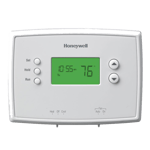
Wi-Fi Enabled Thermostat
A Wi-Fi enabled thermostat is perfect for homeowners with irregular schedules. These thermostats learn your schedules and adjust the temperature accordingly. Settings can be overridden using a smart phone.
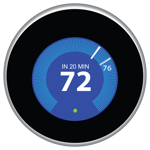
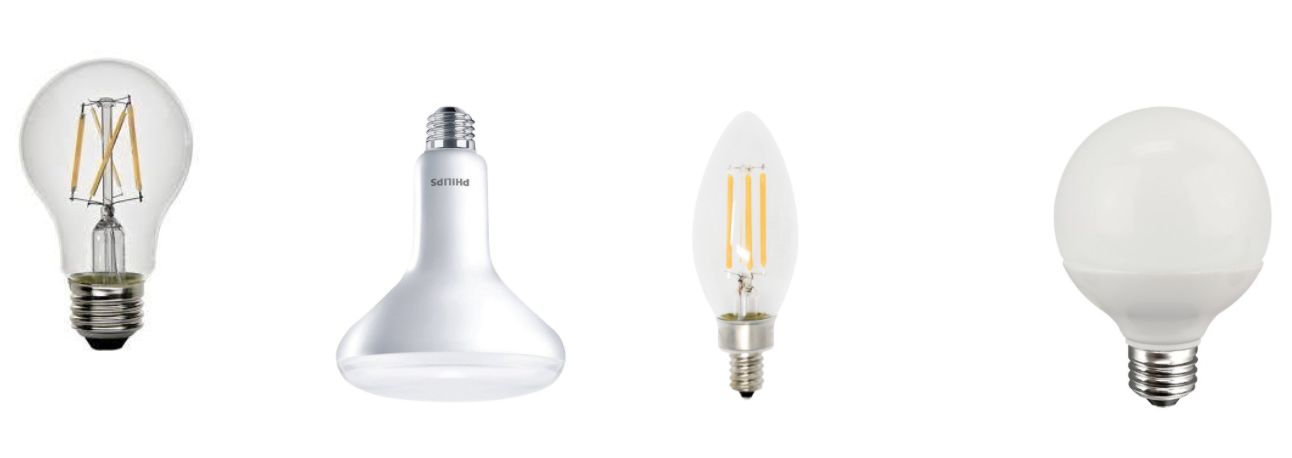
LEDs
Light Emitting Diodes or LEDs come in a variety of sizes and styles. With no warm up period, long life, and a warmincandescent style of light, these bulbs will cut down an electric bill without sacrificing style. An LED bulb uses 75%-90% less energy than an incandescent bulb.
Water heaters can be one of the largest energy consumers in a home. High-efficiency hot water heaters can use a fraction of the energy of standard water heaters.
Water Heaters
On-Demand Water Heater
An on-demand water heater can use less than half the energy of a standard storage tank. These systems are a tankless, fast, on-demand supply of hot water production. With their controlled air intake from and their direct exhaust to the outdoors, they add to the high integrity of today’s new indoor air quality standards. Combined with sealed combustion
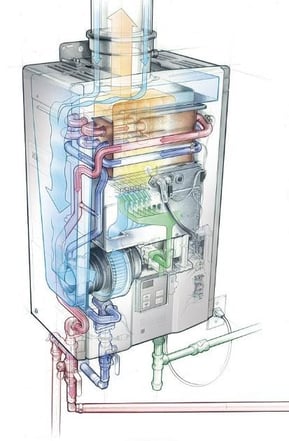
Indirect Storage Tank
For homes already using a boiler to deliver heat to baseboards and radiators, using an indirect storage tank is an efficient solution to store water heated by the boiler. An indirect storage tank is a “passive” storage tank, installed as a separate zone for the boiler to maintain the water’s temperature.
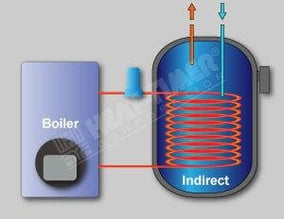
Heat Pump Water Heater
Heat pump water heaters are an efficient replacement solution for homes with standard electric storage tanks. Heat pumps still run on electricity, but use the ambient heat from the basement to assist with heating the water. Heat pump water heaters can use less than half the energy of standard electric storage tanks.
Water Saving Devices
Shower Heads
Replacing showerheads with low flow showerheads will save on both water and water heating costs.
Aerators
Replacing kitchen and bathroom faucet aerators with low flow aerators will save on both water and water heating costs.
Major appliances, not including heating and cooling, make up about 25% of your total electric bill. Installing high efficiency replacements, changing how you use them, or by simply unplugging them can make a big impact.
Refrigerators
An old refrigerator can use as much as 1800 kwh/year. Replacing an inefficient refrigerator can reduce your electric bill by over $300/year. Unplugging a spare refrigerator can save over $400/year.
Dehumidifiers
An old dehumidifier consumes electricity as much as a window air conditioner, and is often left to run year-round. Replacing an inefficient dehumidifier can save over $230/year.
Clothes Washers
Older clothes washers using an “agitator” consume 35% more energy and 33% more water to wash clothes. Clothes dryer efficiency is also largely determined by how much water gets rung out in the washer. Replacing an inefficient washing machine can save on water consumption and shortens the time needed in the dryer.






